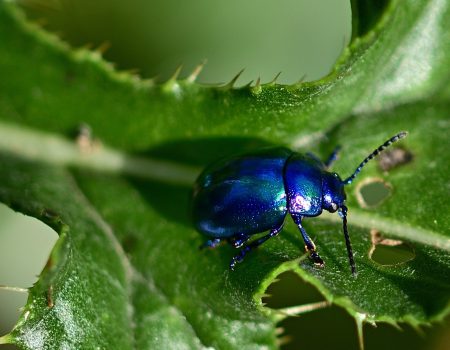You’re peeking into your axolotl’s tank and something feels off. Maybe there’s a torn gill, a missing limb, or a strange behavior you’ve never seen before.
Don’t panic! Injuries happen, even to these hardy little amphibians. Handling an injured axolotl can feel overwhelming, but with the right care, your aquatic buddy can heal and thrive again.
Let’s go step-by-step so you’ll know exactly what to do when things go wrong.
Spotting the Signs of Injury in Your Axolotl

Axolotls might not bark or meow when something’s wrong, but they do show clear signs of distress or injury. The key is knowing what to look for and acting quickly.
Axolotls typically live between 10 to 15 years in captivity, with some individuals reaching up to 20 years under optimal care conditions.
Common Signs Your Axolotl May Be Injured
- Damaged gills: Look for frayed or missing filaments.
- Wounds on the body: Cuts, scrapes, or open sores are visible clues.
- Missing limbs or digits: Axolotls can regenerate, but sudden losses need attention.
- Abnormal swimming behavior: Floating awkwardly, struggling to sink, or swimming in circles.
- Loss of appetite: Refusing food for more than a day or two is a red flag.
- Fungus growth: White, cottony patches often indicate stress or injury.
If you notice one or more of these signs, it’s time to step in. Quick action can make all the difference.
What Causes Injuries in Axolotls?
Before treating an injury, you’ve got to figure out what went wrong. This helps you prevent the same issue from happening again.
Common Injury Triggers
- Aggressive tankmates: Fish or other axolotls can nip at gills or limbs.
- Sharp tank decor: Rocks or ornaments with rough edges can tear skin.
- Poor water quality: Ammonia, nitrites, or nitrates irritate and weaken axolotls.
- Improper handling: Rough handling can bruise or stress them out.
- Overcrowding: Too many tankmates often leads to competition and injuries.
Always start by assessing your axolotl’s environment. A clean, safe setup is critical for their recovery and long-term health.
Setting Up a Recovery Tank
Once you’ve identified the issue, the next step is giving your axolotl a safe space to heal. A recovery tank isolates your injured axolotl and makes monitoring easier.
Axolotls can grow to be about 20 to 30 cm (approximately 8 to 12 inches) long.
How to Prepare a Recovery Tank
- Tank size: Use a small, bare-bottom tank (10–15 gallons works well).
- Cool water: Keep the temperature between 60–64°F to reduce stress.
- Gentle filtration: A sponge filter keeps water clean without causing strong currents.
- Dechlorinated water: Always treat tap water with a good water conditioner.
- Hiding spots: Add smooth PVC pipes or caves for security.
Keep the setup simple. You want to avoid anything that could cause further injuries.
Cleaning and Treating Wounds
Now that your axolotl is safe, it’s time to focus on the injury. Proper cleaning and treatment are essential for preventing infections.
Step-by-Step Guide to Treating Minor Injuries
- Handle gently: Use a soft net or your hands (wet them first) to avoid damaging their skin.
- Examine the injury: Look closely under good light to assess the wound.
- Clean with saline: Rinse the affected area with sterile saline solution to remove debris.
- Apply treatment: Use an aquarium-safe antibacterial treatment like Melafix or Pimafix if needed.
For open wounds, you might need to use Indian almond leaves or tannins. These have natural healing properties and can be added directly to the water.
Their weight can vary from 60 to 300 grams (about 2.1 to 8 ounces) depending on their size and health.
When to Use Salt Baths
Salt baths are great for fighting infections, especially fungal ones. But they can stress your axolotl, so only use them if absolutely necessary.
- Mix the salt bath: Dissolve 2–3 teaspoons of aquarium salt per liter of water.
- Short dips only: Place your axolotl in the bath for 10–15 minutes, then return them to the recovery tank.
Salt baths should be done once a day, and only for 2–3 days. Overdoing it can harm your axolotl’s sensitive skin.
Feeding an Injured Axolotl
Injured axolotls often lose their appetite, but proper nutrition is vital for healing. The trick is offering food that’s both easy to eat and nutritious.
Best Foods for Recovery
- Live blackworms or earthworms: These are soft, protein-rich, and irresistible to axolotls.
- Bloodworms (frozen or live): A good option for smaller axolotls or those struggling to eat.
- Pellets for axolotls: Opt for high-quality sinking pellets if they’ll accept them.
Offer food gently using tongs, and remove uneaten bits after 10–15 minutes. Patience is key; injured axolotls may take a few days to regain interest in food.
Monitoring Progress
Healing takes time, but you should see gradual improvements if you’re consistent with care. Regularly check your axolotl’s wounds and overall behavior.
Signs Your Axolotl Is Recovering
- Wound closure: Cuts and scrapes should begin to shrink and look less inflamed.
- Regrowth of limbs or gills: You may notice tiny buds forming within a week or two.
- Increased activity: A healing axolotl will start exploring more and swimming normally.
- Improved appetite: They’ll begin eating regularly again.
If you don’t see progress after a couple of weeks or the condition worsens, it’s time to contact a vet. Delaying professional help can put your axolotl at serious risk.
When to Call a Vet
Some injuries or illnesses are beyond home treatment. Knowing when to get help is critical.
Situations That Require a Vet
- Deep wounds or severe bleeding: These need professional cleaning and possibly stitches.
- Persistent fungus: If salt baths and treatments don’t work, a vet may prescribe medication.
- Swelling or infections: Any signs of pus or extreme swelling need urgent care.
- Prolonged floating or sinking issues: These could indicate internal injuries or infections.
Look for an exotic animal vet experienced with amphibians. Prompt medical attention can save your axolotl’s life.
Preventing Future Injuries
Once your axolotl has recovered, focus on prevention. A safe environment and proper care minimize the chances of injuries happening again.
Tips for a Safer Axolotl Habitat
- Choose smooth decor: Avoid sharp edges and rough surfaces.
- Tankmate caution: Keep axolotls alone or with other peaceful axolotls of similar size.
- Regular water testing: Use a reliable test kit to check ammonia, nitrites, and nitrates weekly.
- Gentle handling: Only handle axolotls when necessary, and always with wet hands.
- Monitor tank dynamics: Watch for bullying or unusual behavior among tankmates.
By staying proactive, you’ll create a safe, stress-free home for your axolotl.
Wrapping Up
Handling an injured axolotl can feel challenging, but it’s doable with the right steps. Start by spotting the issue, setting up a recovery tank, and treating the wound carefully. Pay attention to their food and monitor their healing closely. If things don’t improve, reach out to a vet.
Remember, a safe environment is your best defense against future injuries. With a little effort, your axolotl can bounce back and stay healthy for years to come. They depend on you, so give them the care they deserve!
References
Help! Injured Axolotl – Caudata.org
Injuries from Fighting in Axolotls: First Aid and Tips – VetBilim
Help! My Axolotl Got Badly Injured – Reddit
Health and Injury – Axolittle Axolotls
Skin Injuries in Axolotls: First Aid and More – VetBilim
Disclaimer
This content on Bagrica is for informational purposes only. Consult a professional for pet care or farming advice. Bagrica is not liable for any actions taken based on this information.







No Comment! Be the first one.